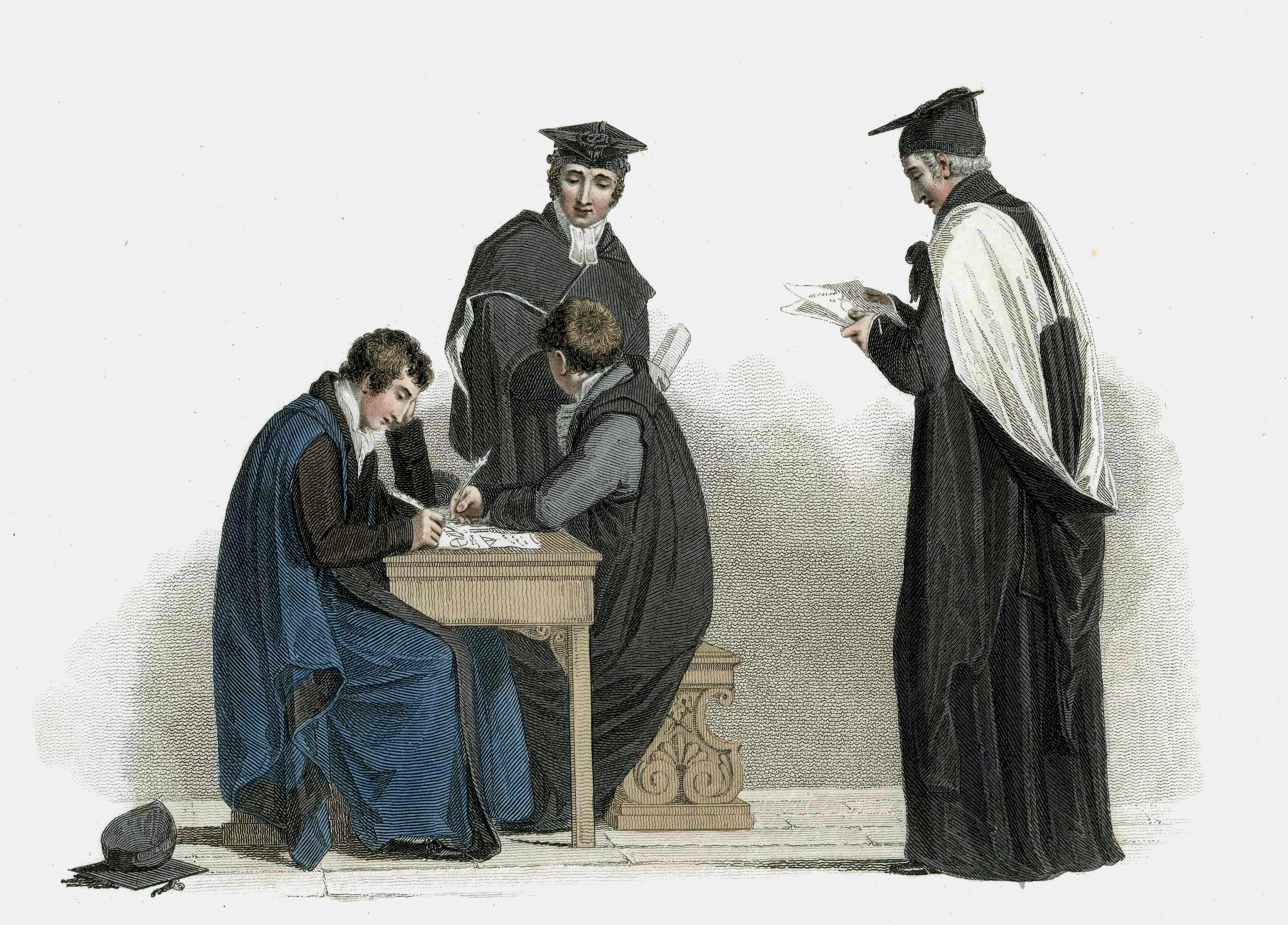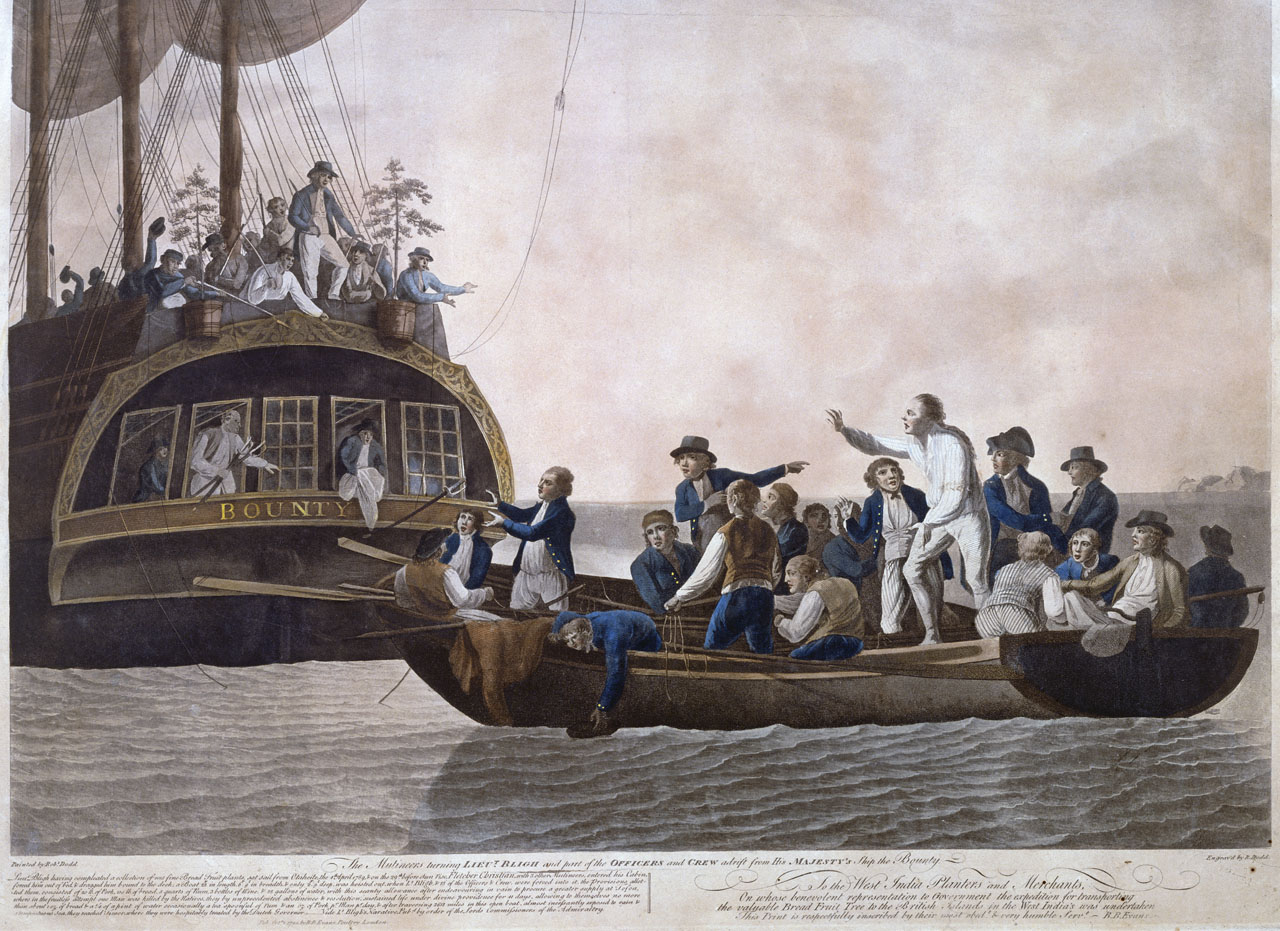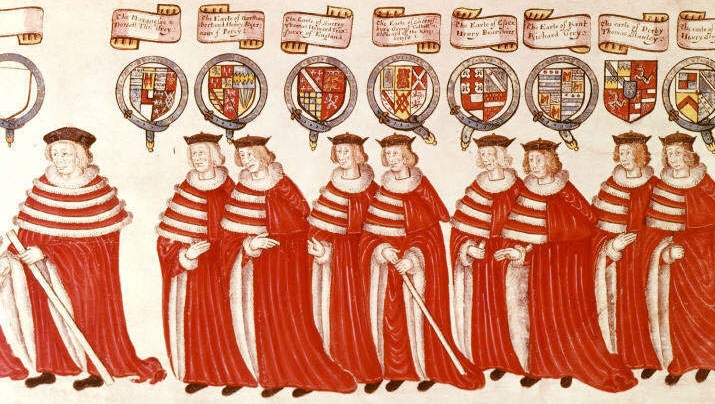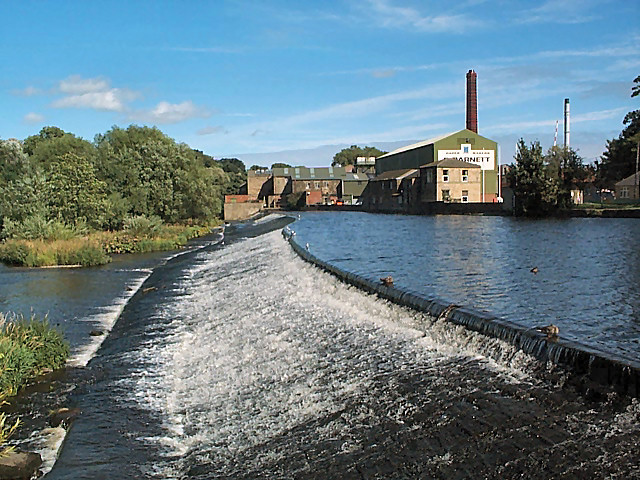|
John Nevill, 3rd Earl Of Abergavenny
John Nevill, 3rd Earl of Abergavenny (25 December 1789 – 12 April 1845), styled Hon. John Nevill until 1826 and Viscount Nevill from 1826 to 1843, was an English peer. He was wounded while on active service in the Peninsular War, and after the close of the Napoleonic War, took holy orders, holding family livings in Norfolk and Suffolk. The deaths of his two elder brothers made him heir to his father's earldom, to which he succeeded in 1843, but he was in delicate health and died in 1845. The third son of Henry Nevill, 2nd Earl of Abergavenny and his wife Mary Robinson, he was born on 25 December 1789 and baptised on 27 February 1790 at Isleworth, Middlesex. On 20 October 1807, he purchased a second lieutenant's commission in the 23rd Regiment of Foot. He went out with the second battalion of the regiment to Ireland in November, and later served with the regiment in the Peninsular War. Nevill was promoted to lieutenant on 8 April 1809. After the Battle of Vittoria, he obtained o ... [...More Info...] [...Related Items...] OR: [Wikipedia] [Google] [Baidu] |
House Of Neville
The Neville or Nevill family (originally FitzMaldred) is a nobility, noble house of early medieval origin, which was a leading force in Kingdom of England, English politics in the later Middle Ages. The family became one of the two major powers in northern England and played a central role in the Wars of the Roses along with Percy–Neville feud, their rival, the House of Percy. Origins The male-line origin of the Neville family first appears in surviving records not until decades after the Norman Conquest of England (1066) and Domesday Book (1086), which did not cover County Durham, the area of their earliest recorded landholdings. The male line of the Nevilles was of History of Anglo-Saxon England, native origin, and the family may well have been part of the pre-Conquest aristocracy of Northumbria. Following the Norman Conquest, most of the existing Anglo-Saxon aristocracy of England were dispossessed and replaced by a new Norman ruling elite, and although such survivals are very ... [...More Info...] [...Related Items...] OR: [Wikipedia] [Google] [Baidu] |
Fellow-commoner
A commoner is a student at certain universities in the British Isles who historically pays for his own tuition and commons, typically contrasted with scholars and exhibitioners, who were given financial emoluments towards their fees. Cambridge Commoners were also known as pensioners at the University of Cambridge. Pensioners paid for their own tuition and commons. A fellow‑commoner was a rank of student above pensioners but below noblemen. They paid double the tuition fee and enjoyed more privileges than pensioners, such as commoning with fellows. As fellow‑commoners had considerable wealth, they were ineligible for scholarships and paid fellowships at some colleges. Fellow‑commoners who wore a hat instead of a velvet cap were known as hat fellow‑commoners. They were often sons of nobility but not the eldest, who enjoyed the rank of "noblemen". Today, a fellow‑commoner at Cambridge is one who enjoys access to the senior common room without a fellowship. Trinit ... [...More Info...] [...Related Items...] OR: [Wikipedia] [Google] [Baidu] |
1789 Births
Events January–March * January – Emmanuel Joseph Sieyès publishes the pamphlet ''What Is the Third Estate?'' ('), influential on the French Revolution. * January 7 – The 1788-89 United States presidential election and 1789 United States House of Representatives elections, House of Representatives elections are held. * January 9 – Treaty of Fort Harmar: The terms of the Treaty of Fort Stanwix (1784) and the Treaty of Fort McIntosh, between the United States Government and certain native American tribes, are reaffirmed, with some minor changes. * January 21 – The first American novel, ''The Power of Sympathy or the Triumph of Nature Founded in Truth'', is printed in Boston, Massachusetts. The anonymous author is William Hill Brown. * January 23 – Georgetown University is founded in Georgetown (Washington, D.C.), Georgetown, Maryland (today part of Washington, D.C.), as the first Catholic Church, Roman Catholic college in the United Stat ... [...More Info...] [...Related Items...] OR: [Wikipedia] [Google] [Baidu] |
Earl Of Abergavenny
Earl () is a rank of the nobility in the United Kingdom. The title originates in the Old English word ''eorl'', meaning "a man of noble birth or rank". The word is cognate with the Scandinavian form '' jarl'', and meant " chieftain", particularly a chieftain set to rule a territory in a king's stead. After the Norman Conquest, it became the equivalent of the continental count (in England in the earlier period, it was more akin to a duke; in Scotland, it assimilated the concept of mormaer). Alternative names for the rank equivalent to "earl" or "count" in the nobility structure are used in other countries, such as the ''hakushaku'' (伯爵) of the post-restoration Japanese Imperial era. In modern Britain, an earl is a member of the peerage, ranking below a marquess and above a viscount. A feminine form of ''earl'' never developed; instead, ''countess'' is used. Etymology The term ''earl'' has been compared to the name of the Heruli, and to runic ''erilaz''. Proto-N ... [...More Info...] [...Related Items...] OR: [Wikipedia] [Google] [Baidu] |
William Nevill, 4th Earl Of Abergavenny
William Nevill, 4th Earl of Abergavenny (28 June 1792 – 17 August 1868), styled Hon. William Nevill until 1845, was a British peer and clergyman. The fourth son of Henry Nevill, 2nd Earl of Abergavenny, he was ordained in 1816 and occupied two of the family livings until 1844. He succeeded his brother as Earl of Abergavenny the following year. Career Nevill was born on 28 June 1792, the fourth son of Henry Neville, 2nd Earl of Abergavenny, and his wife Mary Robinson. He was baptised on 2 August 1792 at Isleworth, Middlesex. Nevill was educated at Uckfield, matriculated at Christ Church, Oxford on 22 October 1812, and was admitted fellow-commoner at Magdalene College, Cambridge on 29 March 1816, receiving his MA the same year. He was ordained as a deacon on 21 July 1816. On 1 November 1816, he was appointed rector of the family living of Birling, Kent, and on 23 September 1818, to the vicarage of Frant, Sussex, which his elder brother John had vacated for him. He resigned his li ... [...More Info...] [...Related Items...] OR: [Wikipedia] [Google] [Baidu] |
George IV Of The United Kingdom
George IV (George Augustus Frederick; 12 August 1762 – 26 June 1830) was King of the United Kingdom of Great Britain and Ireland and King of Hanover from the death of his father, King George III, on 29 January 1820, until his own death ten years later. At the time of his accession to the throne, he was acting as Prince Regent, having done so since 5 February 1811, during his father's final mental illness. George IV was the eldest child of King George III and Queen Charlotte. He led an extravagant lifestyle that contributed to the fashions of the Regency era. He was a patron of new forms of leisure, style and taste. He commissioned John Nash to build the Royal Pavilion in Brighton and remodel Buckingham Palace, and commissioned Jeffry Wyatville to rebuild Windsor Castle. George's charm and culture earned him the title "the first gentleman of England", but his dissolute way of life and poor relationships with his parents and his wife, Caroline of Brunswick, earned ... [...More Info...] [...Related Items...] OR: [Wikipedia] [Google] [Baidu] |
Otley
Otley is a market town and civil parish at a bridging point on the River Wharfe, in the City of Leeds metropolitan borough in West Yorkshire, England. Historically a part of the West Riding of Yorkshire, the population was 13,668 at the 2011 census. It is in two parts: south of the river is the historic town of Otley and to the north is Newall, which was formerly a separate township. The town is in lower Wharfedale on the A660 road which connects it to Leeds. The town is in the Otley and Yeadon ward of Leeds City Council and the Leeds North West parliamentary constituency. History Toponymy Otley's name is derived from Otto, Otho, Othe, or Otta, a Saxon personal name and ''leah'', a woodland clearing in Old English. It was recorded as ''Ottanlege'' in 972 and ''Otelai'' or ''Othelia'' in the ''Domesday Book'' of 1086. The name Chevin has close parallels to the early Brythonic Welsh term ''Cefn'' meaning ridge and may be a survival of the ancient Cumbric language. Early ... [...More Info...] [...Related Items...] OR: [Wikipedia] [Google] [Baidu] |
Bergh Apton
Bergh Apton (Ber-Guh App-ton) is a village and civil parish in the South Norfolk district of Norfolk, England, 7 miles (11 km) south-east of Norwich just south of the A146 road, A146 between Yelverton, Norfolk, Yelverton and Thurton. According to the United Kingdom Census 2001, 2001 census it had a population of 428 in 186 households, the population increasing to 442 at the 2011 Census. History The origin of the name 'Bergh Apton' is from the joining of two separate villages; Apton to the north-west and Bergh to the south-east, each with its own church, the origin of their names are unknown. Apton was served by the church of St. Martin which lay near the present day Church Farm on Dodgers Lane, its last recorded use being in 1555 and the remains being finally cleared in 1834. Bergh was served by the Church of St. Peter and St. Paul which stands on a low hill overlooking the River Chet which marks the southern boundary of the now combined parish. The church appears to have ... [...More Info...] [...Related Items...] OR: [Wikipedia] [Google] [Baidu] |
Rector (ecclesiastical)
A rector is, in an ecclesiastical sense, a cleric who functions as an administrative leader in some Christian denominations. In contrast, a vicar is also a cleric but functions as an assistant and representative of an administrative leader. Ancient usage In ancient times bishops, as rulers of cities and provinces, especially in the Papal States, were called rectors, as were administrators of the patrimony of the Church (e.g. '). The Latin term ' was used by Pope Gregory I in ''Regula Pastoralis'' as equivalent to the Latin term ' (shepherd). Roman Catholic Church In the Roman Catholic Church, a rector is a person who holds the ''office'' of presiding over an ecclesiastical institution. The institution may be a particular building—such as a Church (building), church (called his rectory church) or shrine—or it may be an organization, such as a parish, a mission or quasi-parish, a seminary or house of studies, a university, a hospital, or a community of clerics or r ... [...More Info...] [...Related Items...] OR: [Wikipedia] [Google] [Baidu] |
Sussex
Sussex (), from the Old English (), is a Historic counties of England, historic county in South East England that was formerly an independent medieval Anglo-Saxons, Anglo-Saxon Kingdom of Sussex, kingdom. It is bounded to the west by Hampshire, north by Surrey, northeast by Kent, south by the English Channel, and divided for many purposes into the Ceremonial counties of England, ceremonial counties of West Sussex and East Sussex. Brighton and Hove, though part of East Sussex, was made a unitary authority in 1997, and as such, is administered independently of the rest of East Sussex. Brighton and Hove was granted city status in the United Kingdom, city status in 2000. Until then, Chichester was Sussex's only city. The Brighton and Hove built-up area is the 15th largest conurbation in the UK and Brighton and Hove is the most populous city or town in Sussex. Crawley, Worthing and Eastbourne are major towns, each with a population over 100,000. Sussex has three main geographic su ... [...More Info...] [...Related Items...] OR: [Wikipedia] [Google] [Baidu] |
Frant
Frant is a village and civil parish in the Wealden District of East Sussex, England, on the Kentish border about three miles (5 km) south of Royal Tunbridge Wells. When the iron industry was at its height, much of the village was owned by ironmasters. Smuggling occurred here in the 17th and 18th centuries, and one of the turnpike roads (now the A267) came through here at that time. Frant church is dedicated to St Alban and there is a church school. St Alban's Frant was a major surveying point for the Anglo-French Survey (1784–1790) calculating the precise distance and relationship between the Paris Observatory and the Royal Greenwich Observatory, undertaken by General William Roy. There are three public houses in the parish: the Abergavenny Arms on the A267 in Frant, the George Inn in the High Street and the Brecknock Arms at Bells Yew Green. The George Inn plays host to the Sloe Gin World Championships each December, attracting entries from around the globe. L ... [...More Info...] [...Related Items...] OR: [Wikipedia] [Google] [Baidu] |
Vicar (Anglicanism)
Vicar is a title given to certain parish priests in the Church of England and other Anglican churches. It has played a significant role in Anglican church organisation in ways that are different from other Christian denominations. The title is very old and arises from the medieval arrangement where priests were appointed either by a secular lord, by a bishop or by a religious foundation. Historically, but no longer, vicars share a benefice with a rector (often non-resident) to whom the great tithes were paid. ''Vicar'' derives from the Latin ''vicarius'' meaning a substitute. Historically, Anglican parish priests were divided into rectors, vicars and (rarely) perpetual curates. These were distinguished according to the way in which they were appointed and remunerated. The church was supported by tithes: taxes (traditionally of ten percent) levied on the personal and agricultural output of the parish. Etymology Parish churches in England originated as the personal property of ( ... [...More Info...] [...Related Items...] OR: [Wikipedia] [Google] [Baidu] |





